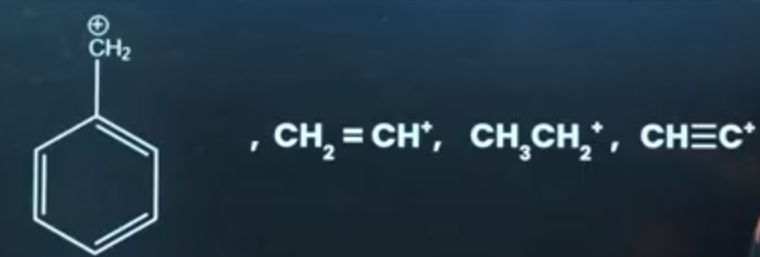What is meant by stability of a coordination compound in solution ? State the factors which govern stability of complexes.
Step-by-Step Solution:
1. Definition of Stability of Coordination Compounds:
The stability of a coordination compound in solution refers to its ability to maintain its structure and composition when dissolved in a solvent, typically water. A stable complex does not easily dissociate into its constituent ions or molecules.
2. Factors Governing Stability of Coordination Complexes:
Several factors influence the stability of coordination compounds:
- Effective Atomic Number (EAN):
The EAN is calculated using the formula:
EAN=Z−n+2×C
where Z is the atomic number of the metal, n is the oxidation state of the metal, and C is the coordination number. A stable complex often has an EAN that corresponds to a noble gas configuration (e.g., 18 for Argon or 36 for Krypton).
- Stability Constant (K):
The stability constant (K) quantifies the stability of a complex in solution. It is defined as the equilibrium constant for the formation of the complex from its metal ion and ligands. A higher stability constant indicates a more stable complex.
- Nature of the Metal Ion:
The size, charge, and electronic configuration of the metal ion affect its ability to form stable complexes. Transition metals, for example, often form more stable complexes due to their ability to accommodate various oxidation states and coordination numbers.
- Nature of the Ligands:
The type of ligands (e.g., bidentate, tridentate, chelating agents) and their donor atoms (e.g., nitrogen, oxygen) play a crucial role in the stability of the complex. Strong field ligands (like CN⁻ and NH₃) tend to form more stable complexes compared to weak field ligands (like H₂O and Cl⁻).
- Steric Effects:
The spatial arrangement of ligands around the metal ion can influence stability. Bulky ligands may hinder the approach of other ligands, affecting the overall stability of the complex.
- Electrostatic Interactions:
The charge on the metal ion and the ligands can lead to attractive or repulsive forces that impact stability. Generally, complexes with higher charge density on the metal ion are more stable.
The stability of a coordination compound in solution refers to its ability to maintain its structure and composition when dissolved in a solvent, typically water. A stable complex does not easily dissociate into its constituent ions or molecules.
Several factors influence the stability of coordination compounds:
The EAN is calculated using the formula:
EAN=Z−n+2×C
where Z is the atomic number of the metal, n is the oxidation state of the metal, and C is the coordination number. A stable complex often has an EAN that corresponds to a noble gas configuration (e.g., 18 for Argon or 36 for Krypton).
The stability constant (K) quantifies the stability of a complex in solution. It is defined as the equilibrium constant for the formation of the complex from its metal ion and ligands. A higher stability constant indicates a more stable complex.
The size, charge, and electronic configuration of the metal ion affect its ability to form stable complexes. Transition metals, for example, often form more stable complexes due to their ability to accommodate various oxidation states and coordination numbers.
The type of ligands (e.g., bidentate, tridentate, chelating agents) and their donor atoms (e.g., nitrogen, oxygen) play a crucial role in the stability of the complex. Strong field ligands (like CN⁻ and NH₃) tend to form more stable complexes compared to weak field ligands (like H₂O and Cl⁻).
The spatial arrangement of ligands around the metal ion can influence stability. Bulky ligands may hinder the approach of other ligands, affecting the overall stability of the complex.
The charge on the metal ion and the ligands can lead to attractive or repulsive forces that impact stability. Generally, complexes with higher charge density on the metal ion are more stable.
Topper's Solved these Questions
- CORDINATION COMPOUNDSBOOK - PRADEEPCHAPTER - CORDINATION COMPOUNDSEXERCISE - MCQ
190 Videos
- CORDINATION COMPOUNDSBOOK - PRADEEPCHAPTER - CORDINATION COMPOUNDSEXERCISE - Short Answer Questions
64 Videos
- CORDINATION COMPOUNDSBOOK - PRADEEPCHAPTER - CORDINATION COMPOUNDSEXERCISE - NCERT INTEXT QUESTIONS
18 Videos
- CHEMISTRY IN EVERYDAY LIFE BOOK - PRADEEPCHAPTER - CHEMISTRY IN EVERYDAY LIFE EXERCISE - IMPORTANT QUESTION FOR BOARD EXAMINATION
30 Videos
- D- AND F-BLOCK ELEMENTSBOOK - PRADEEPCHAPTER - D- AND F-BLOCK ELEMENTSEXERCISE - IMPORTANT QUESTIONS
30 Videos
Similar Questions
Knowledge Check
Stability of an oxidation state depend on
Alonisation energyBHydration energyCSublimation energyDAll of theseStability of the complex may depend on
AIonisation energyBHydration energyCSublimation energyDAll of theseWhat is meant by constitutional government?
AGovernment according to the terms of the constitutionBgovernment by lawCdemocratic governmentDAll of the above
What is the Stability order of carbocation

View SolutionStability of coordination compounds increases with increase in charge density of the metal ions .
View SolutionThe lowest stability of carbocation is in the compound
View SolutionWhat factor determines the stability of alkene ?
View SolutionStability of the complex depends on
View Solution
